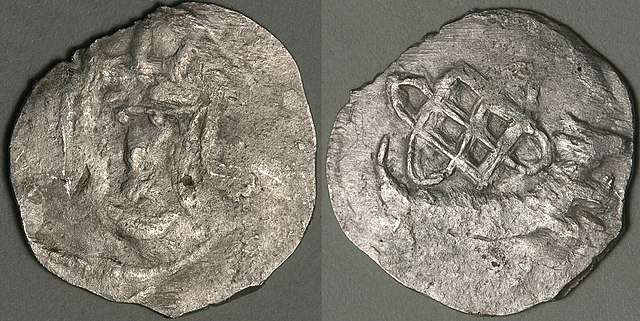The Union of Horodło or Pact of Horodło was a set of three acts signed in the town of Horodło on 2 October 1413. The first act was signed by Władysław II Jagiełło, King of Poland, and Vytautas, Grand Duke of Lithuania. The second and third acts were composed by the Polish nobility (szlachta) and Lithuanian boyars, respectively. The union amended the earlier Polish–Lithuanian unions of Krewo and Vilnius–Radom. Politically, Lithuania received more autonomy as, after the death of Vytautas, the Lithuanian nobles could choose another Grand Duke instead of passing the title to Władysław II Jagiełło or his heir. However, culturally, Lithuania and Poland grew closer. Lithuania adopted Polish institutions of castellans and voivodes. Catholic Lithuanian nobles and church officials were granted equal rights with the Polish nobles and clergy. Forty-seven selected Lithuanian nobles were adopted by Polish families and granted Polish coats of arms. Thus the union signified the beginnings of the Polonization of Lithuanian culture and the rise of the Lithuanian nobility. It was one of the major steps towards the modernization and Europeanization of Lithuania.

Mound of the Horodło Union; the monument was built in 1861 in Horodło to celebrate the 448th anniversary of the union.
Jogaila, later Władysław II Jagiełło, was Grand Duke of Lithuania, later giving the position to his cousin Vytautas in exchange for the title of Supreme Duke of Lithuania (1401–1434) and then King of Poland (1386–1434), first alongside his wife Jadwiga until 1399, and then sole ruler of Poland. Born a pagan, he converted to Catholicism in 1386 and was baptized as Ladislaus in Kraków, married the young Queen Jadwiga, and was crowned King of Poland as Władysław II Jagiełło. In 1387, he converted Lithuania to Catholicism. His own reign in Poland started in 1399, upon the death of Queen Jadwiga, lasted a further thirty-five years, and laid the foundation for the centuries-long Polish–Lithuanian union. He was a member of the Jagiellonian dynasty in Poland that bears his name and was previously also known as the Gediminid dynasty in the Grand Duchy of Lithuania. The dynasty ruled both states until 1572, and became one of the most influential dynasties in late medieval and early modern Europe.

King Władysław II Jagiełło, detail of the Triptych of Our Lady of Sorrows in the Wawel Cathedral, Kraków
Early coin of the Grand Duke of Lithuania Jogaila with a lion, minted at the Vilnius Mint between 1386 and 1387
Seal of Jogaila with his title (in Latin) as King in Lithuania, used in 1377–1386, before becoming the King of Poland in 1386
Lithuanian Denar of Jogaila (minted in 1388–1392) with Vytis (Pahonia)





